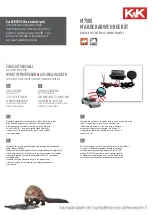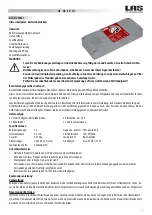
Page 13
Qorvo 1800MHz Small Cell RF Card Hardware User’s Guide
Hardware User’s Guide
5.4
Attenuators Digital Step Attenuator (DSA) DevicesControl Interfaces
There are both parallel and serial Digital Step Attenuator (DSA) devices on this board.
5.4.1
Parallel DSA Control Interface
The two Rx attenuators are Qorvo TQP4M9071 devices.
https://www.qorvo.com/products/p/TQP4M9071
These devices can operate from DC to 4GHz. The TQP4M9071 has a 6-bit parallel interface where
one LSB presents 0.5dB of attenuation. A parallel control interface is much faster than a serial
interface. For procedures like Automatic Gain Control (AGC) it is important that there is a fast
response time and that the attenuation can be updated rapidly. This is why parallel attenuators are
being used in the receive path.
5.4.2
Serial DSA Control Interface
There are not enough GPIO available for a 6-bit interface to all 6 DS
A’s. It is not as important to
change the attenuation in the Tx or DPD paths as it is for the receive path. Therefore the Tx and
DPD attenuators are the Qorvo RFSA3713 (
https://www.qorvo.com/products/p/RFSA3713
), which
uses a proprietary serial interface.
The RFSA3713 can operate from 5MHz to 6GHz. It is a 7-bit attenuator, where each step
represents 0.25dB of attenuation. The maximum clock rate for the serial control interface is 25MHz.
In the reference design this clock is 5MHz, and it is created by dividing down a 100MHz fabric clock
(FCLK) from the PS by 10 and then using this to run the state machine.
The serial interface used by the RFSA3713 is 3-
wire “Serial Addressable Mode” (SAM). There is
a separate serial bus for each of the two channels and the address of the attenuator is specified by
the hard wiring on its address pins.
Figure 9
– Addressing and Timing for the Serial Addressable Mode Interface














































